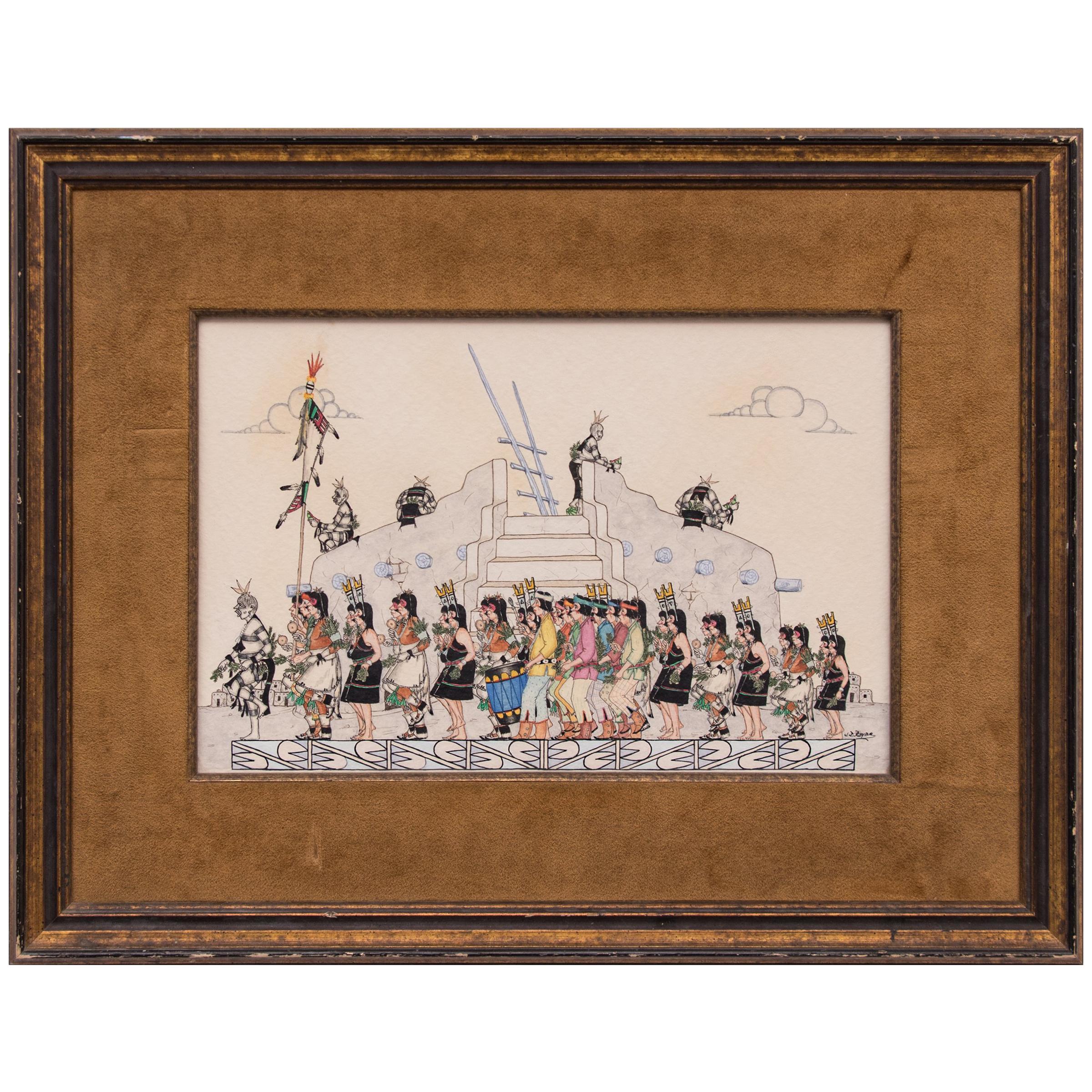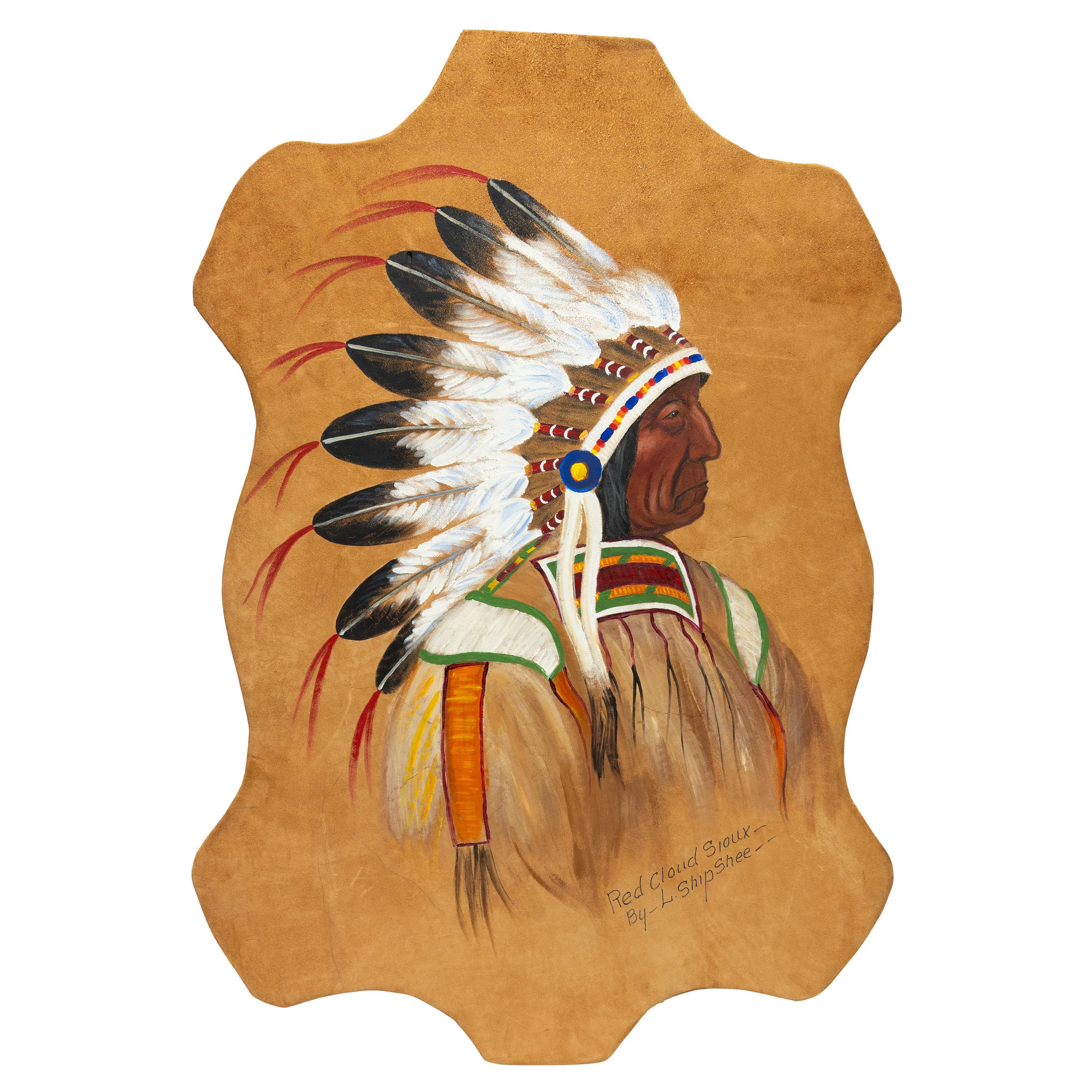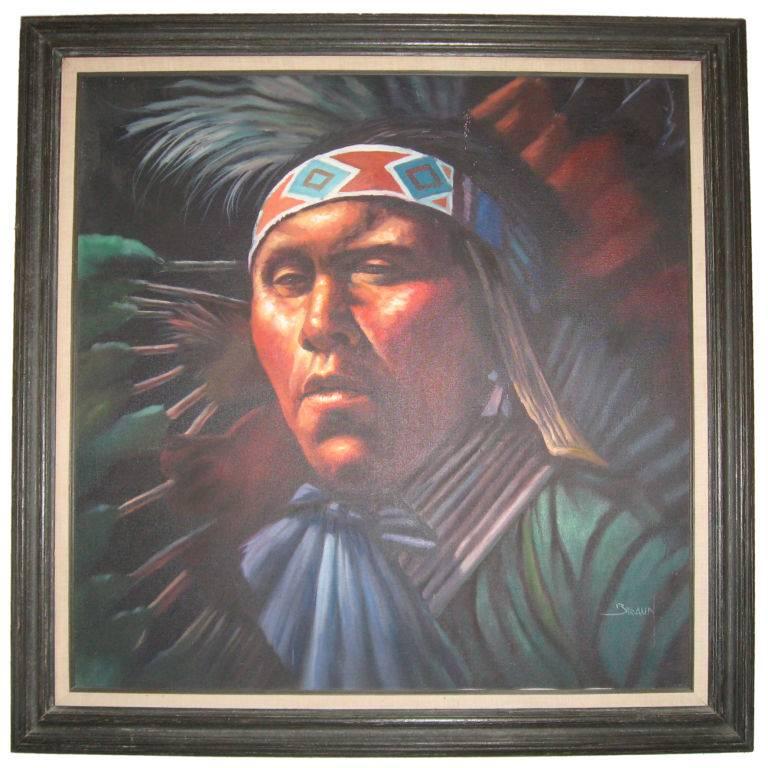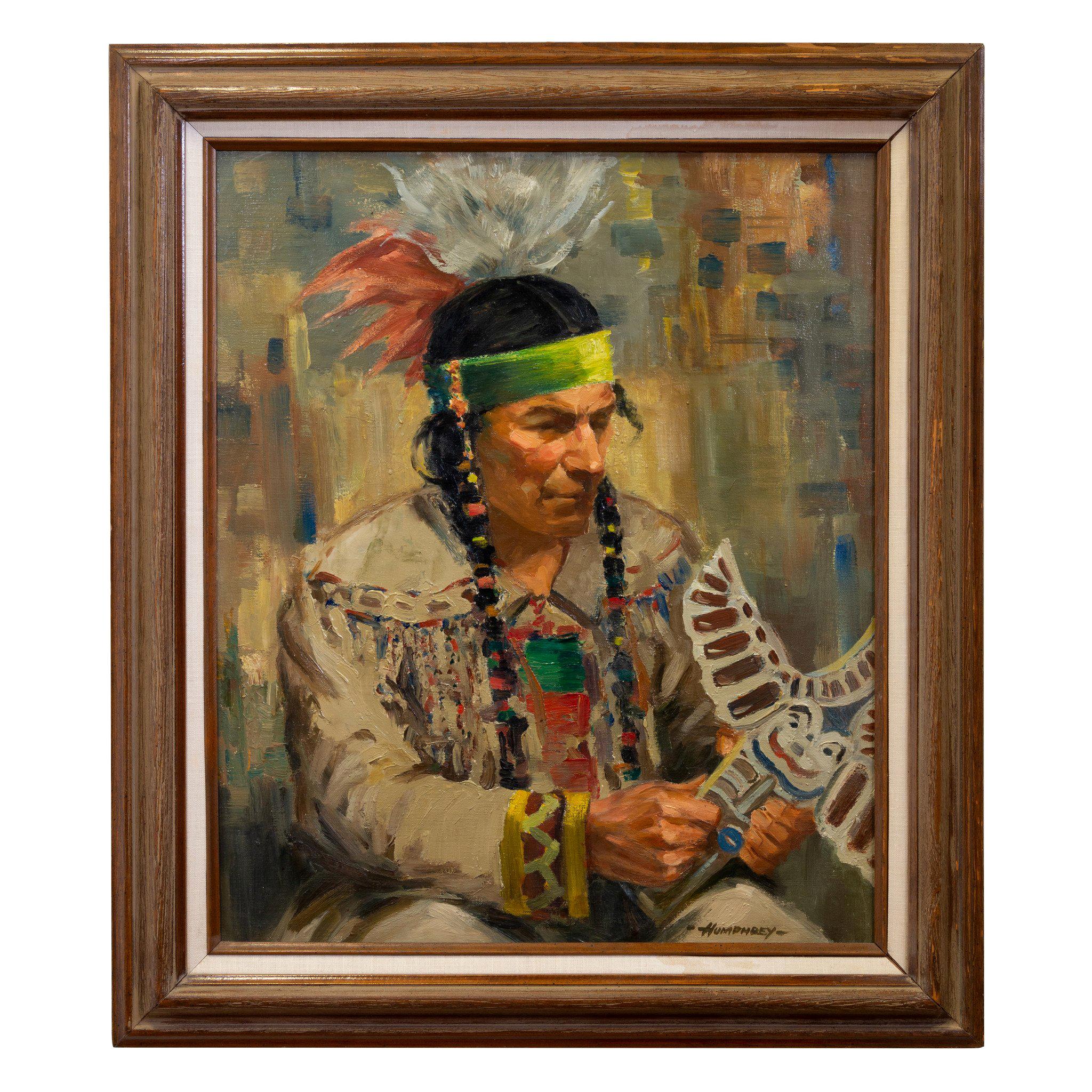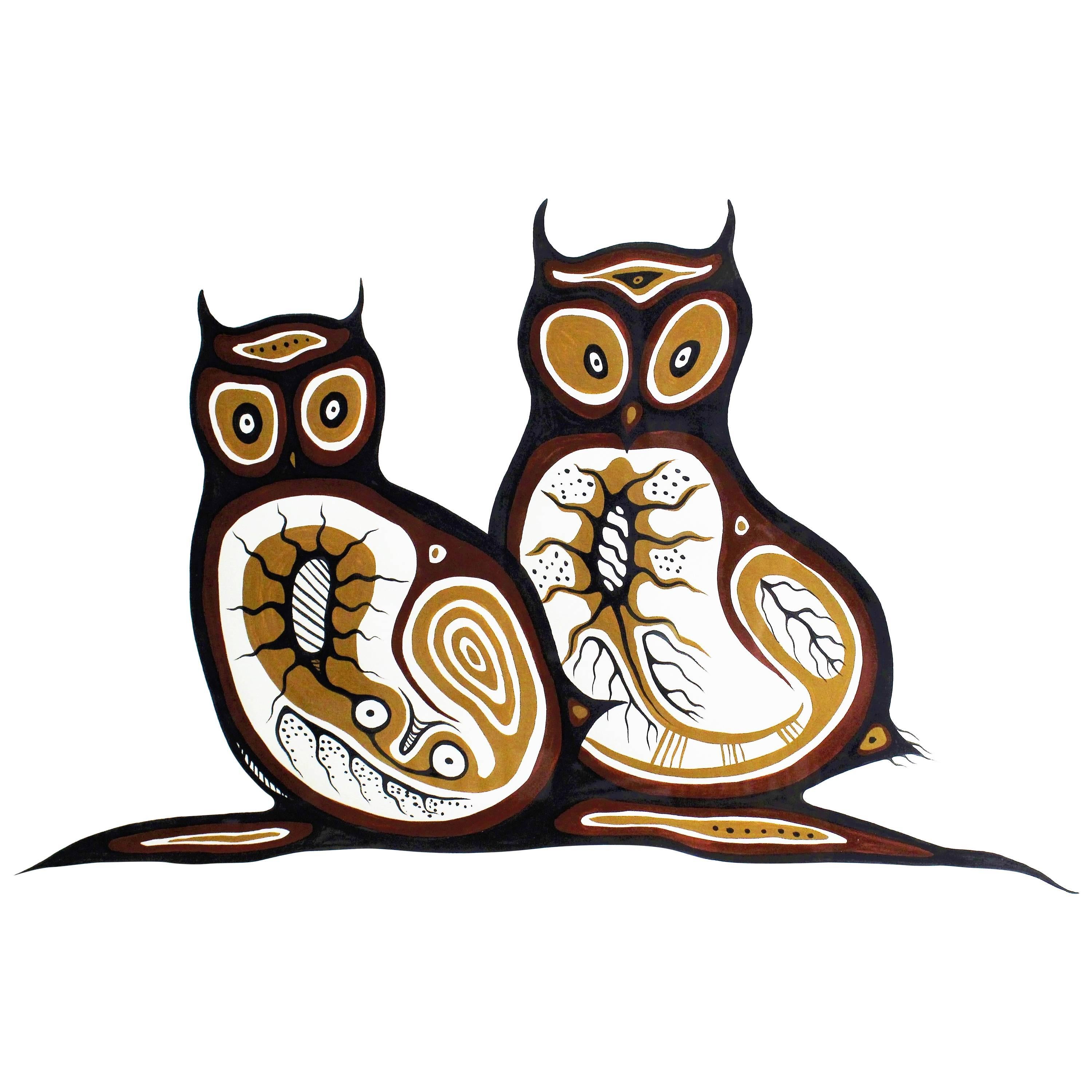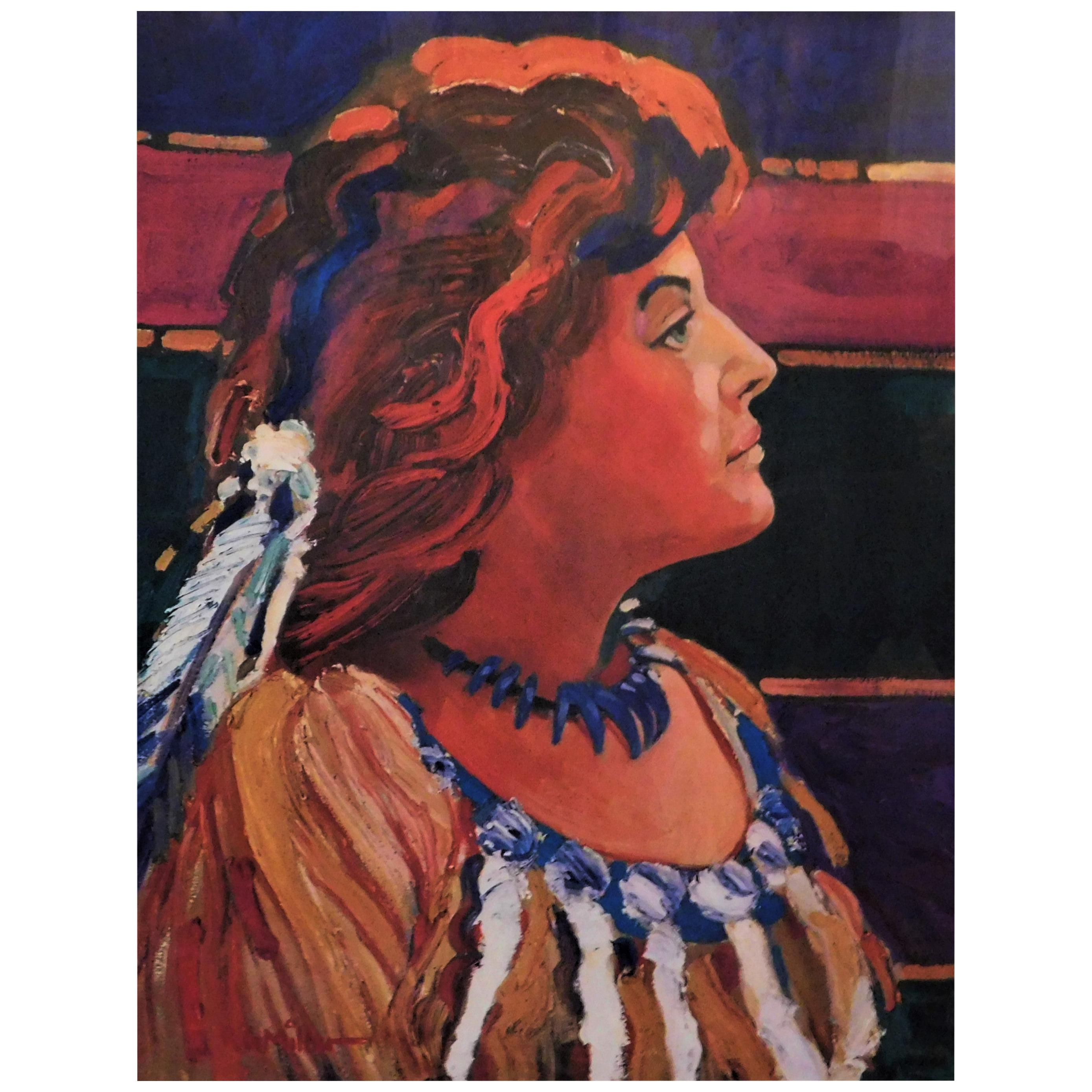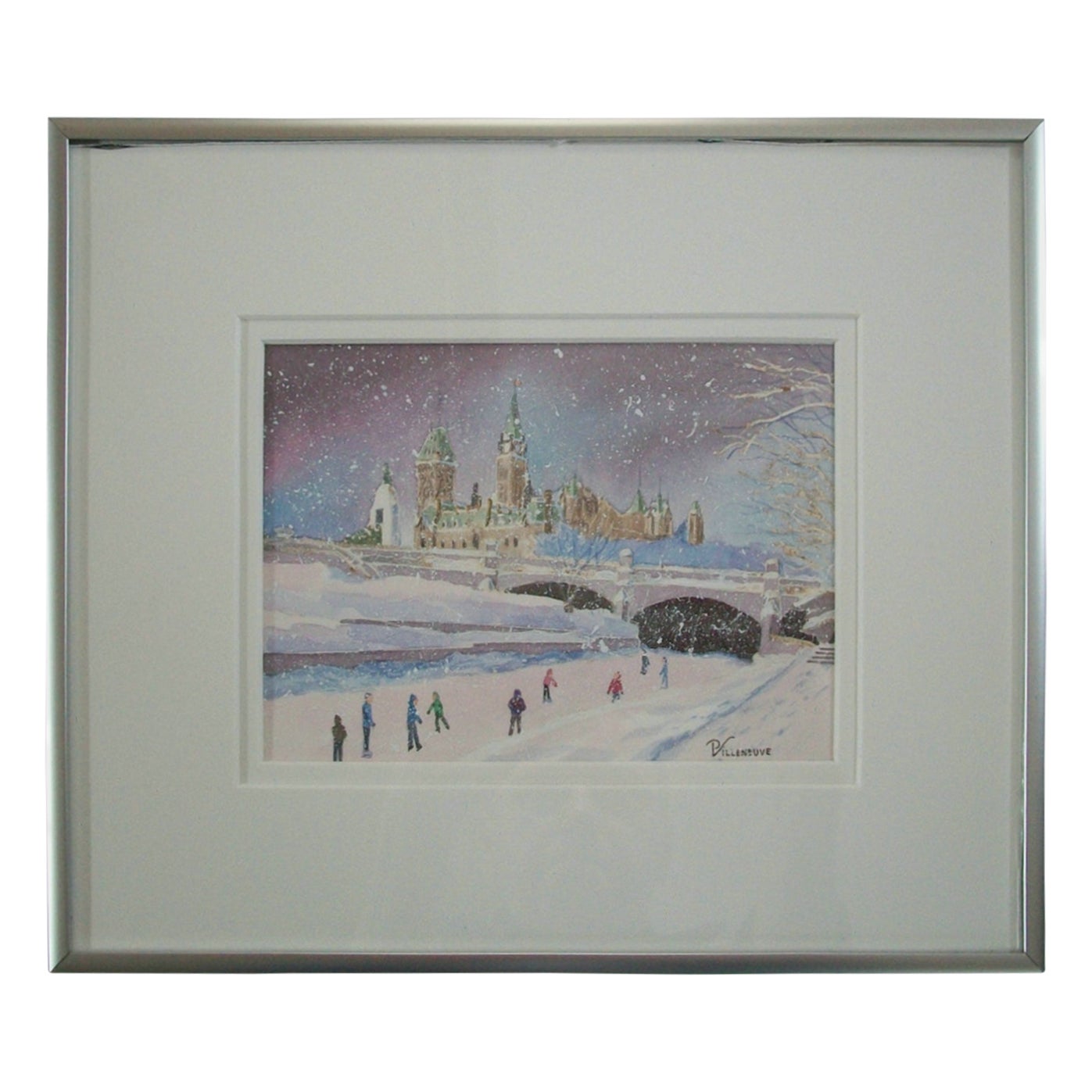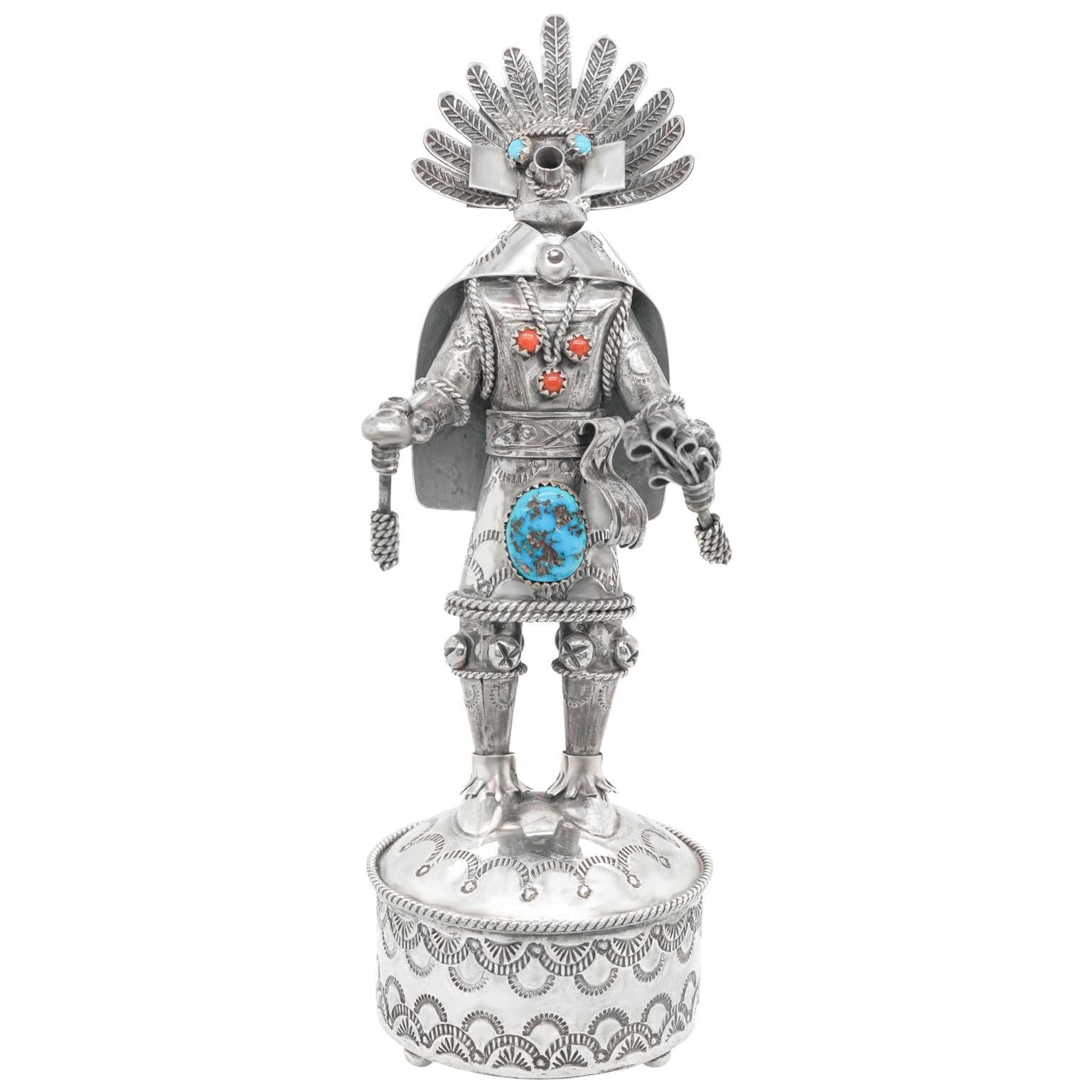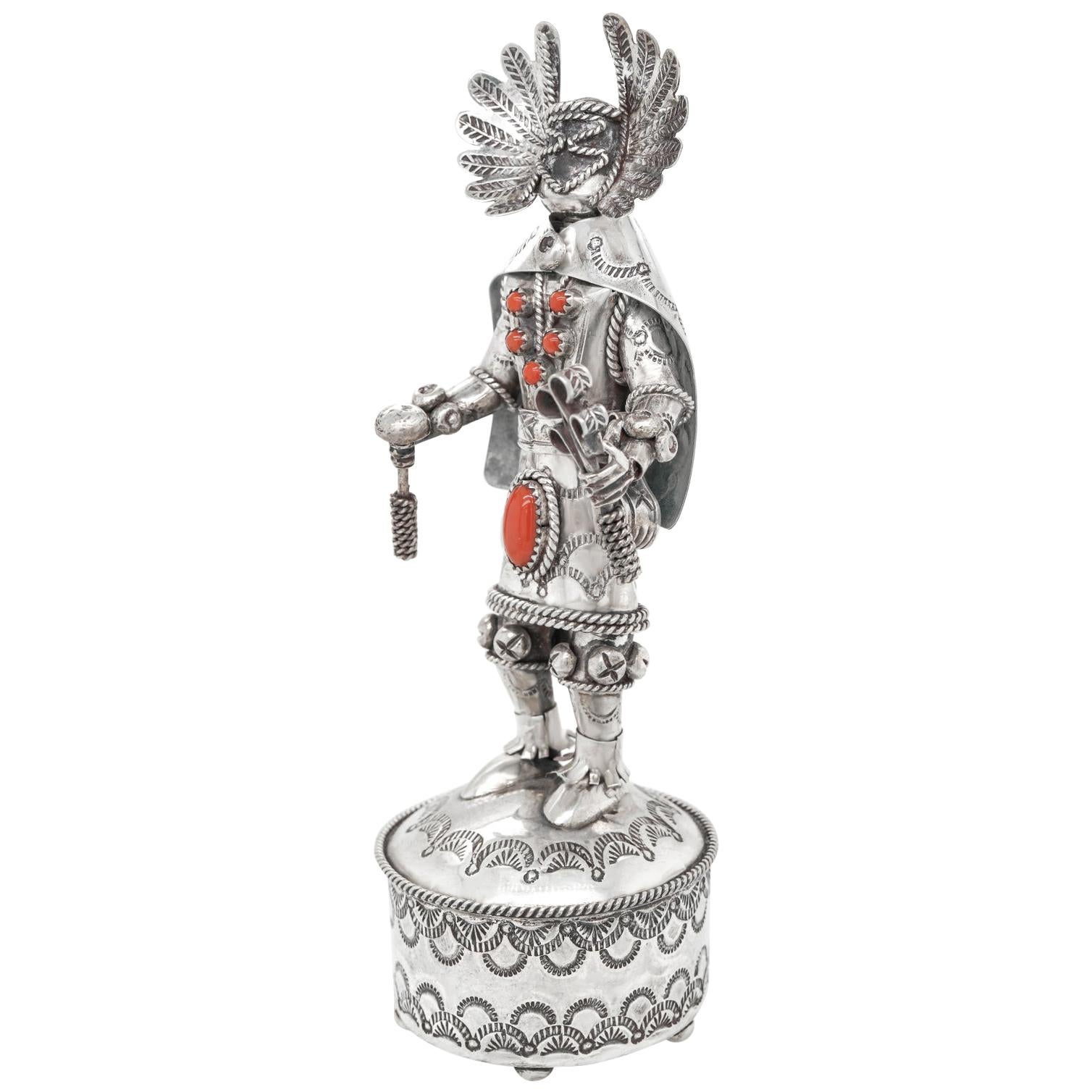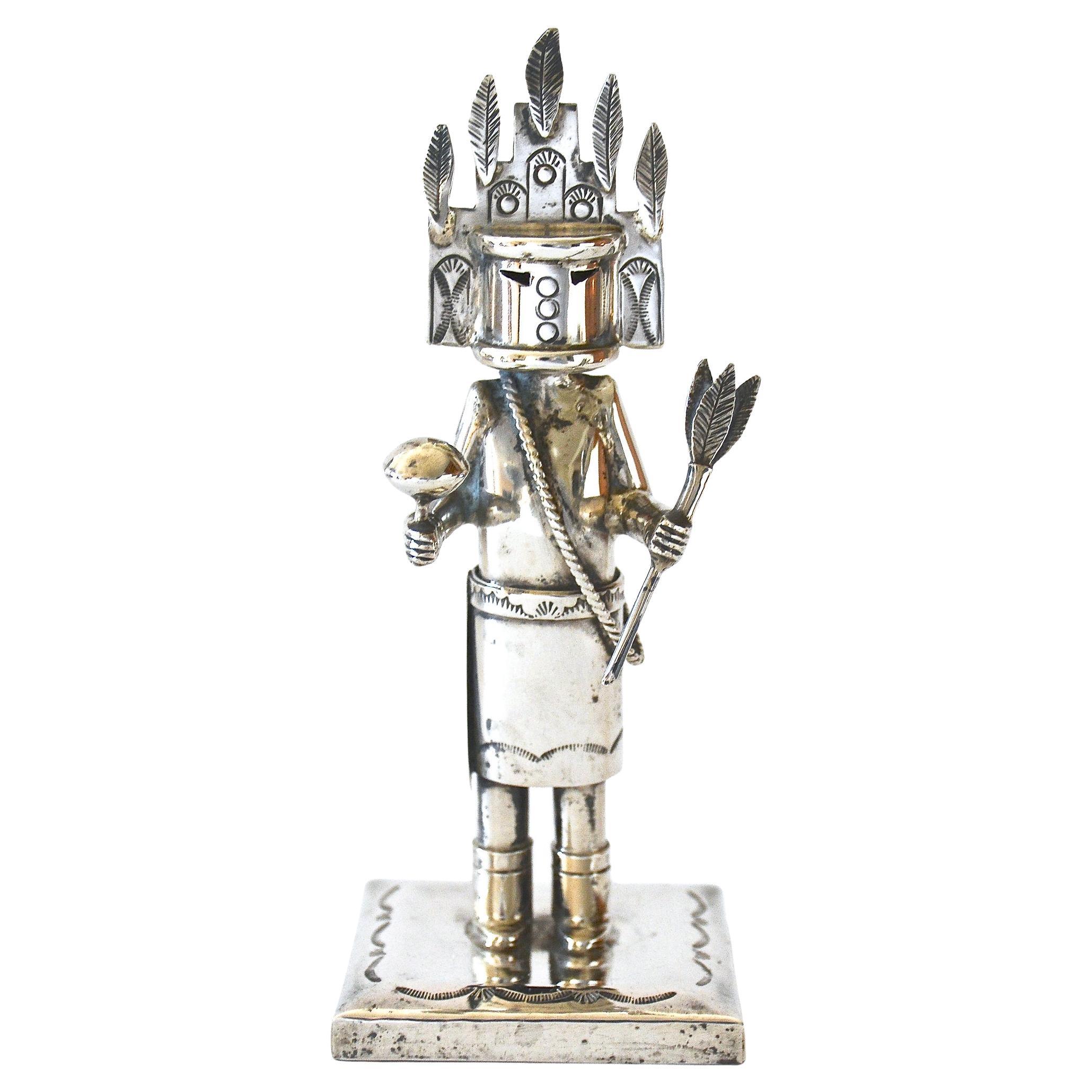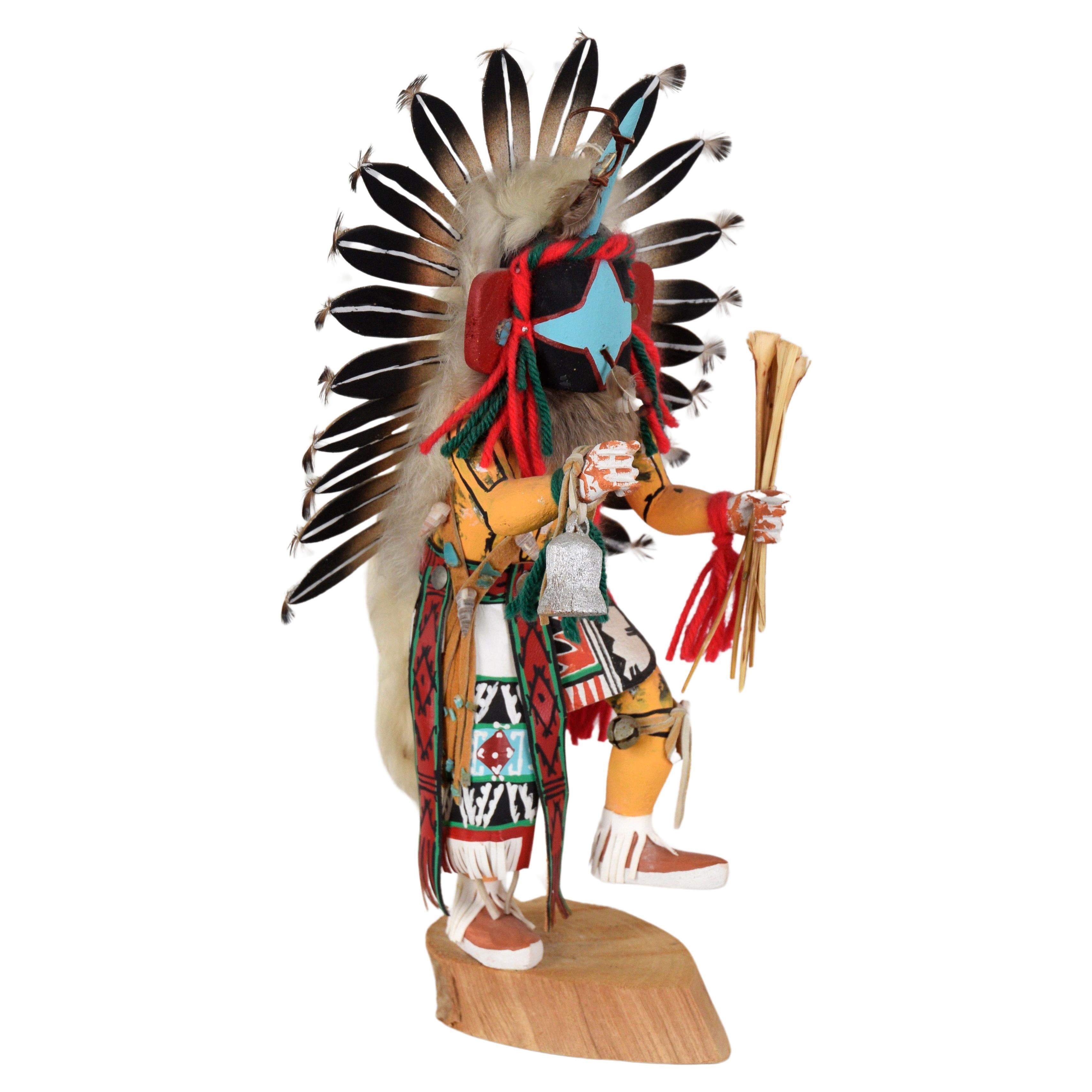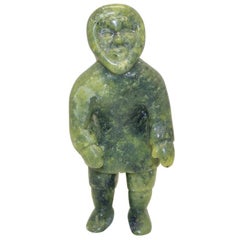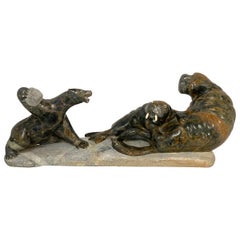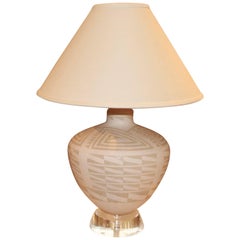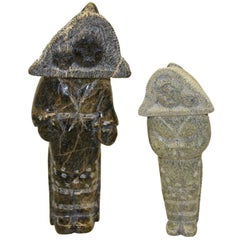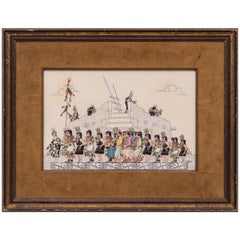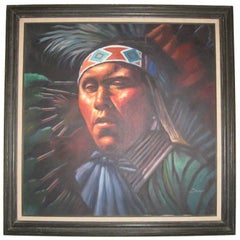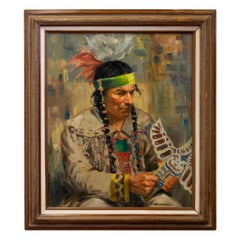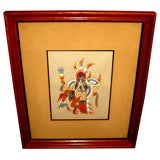
Silkscrreen by Woody Crumbo Potowattomie War dance
View Similar Items
Want more images or videos?
Request additional images or videos from the seller
1 of 9
Silkscrreen by Woody Crumbo Potowattomie War dance
About the Item
A bio from Askart follows:
Woody Crumbo, a Potowatomi Indian from Oklahoma, became a well-known artist of Native American subjects. Of his career, he wrote: "Half of my life passed in striving to complete the pictorial record of Indian history, religion, rituals, customs, way of life, and philosophies . . . a graphic record that a million words could not begin to tell." (Snodgrass 42).
Crumbo was born in 1912 on his mother's reservation allotment near Lexington, Oklahoma. Woody Crumbo's father, Alex, was a horse trader who died when the youngster was just four. The family moved to the Potawatomi lands in Kansas where Crumbo attended grade school. When he was seven his mother died. Being orphaned, his education was stopped for ten years when he was in the third grade, and he moved in with a Creek Indian family near Sand Springs, Oklahoma. For the next 10 years, Crumbo lived with many different Indian families in the area.
At age 17, he resumed his education when he enrolled in the eighth grade at the Chilocoo Indian School and began the study of art, anthropology, and history. There he met and became friends with a group of Kiowa youths, and during summers and school breaks Crumbo lived with them near Anadarko. The boys were taught and influenced by Susie Peters, who was the major figure in encouraging traditional art style among Oklahoma Indians.
It was during this time that Woody Crumbo was allowed to take up the tradition of making and playing the ceremonial cedar wood flute of the Kiowas. This distinction came as a result of his musical ability and intense interest in Indian culture and heritage. He passed the tradition back to a young Kiowa man through the appropriate ceremony in 1976.
At the age of 19, Crumbo was given a scholarship to attend the American Indian Institute in Wichita, Kansas, a Presbyterian school for young Indians with exceptional skills. He graduated three years later, valedictorian of his class. Crumbo's education continued when he attended Wichita University from 1933 to 1936 and studied mural technique with Olaf Nordmark, watercolor with Clayton Henri Staples, and painting and drawing with Oscar Brousse Jacobson.
During those years, Crumbo earned his living as an Indian dancer, and his reputation for excellence quickly spread. In 1933, through a government sponsored program, he led a group of 13 dancers on a tour of many Indian reservations in the nation. From each tribe he learned traditions and dances, and in turn, shared what he knew with them. Dozens of traditional songs and dances were perpetuated and disseminated through his efforts. Crumbo's musical talents on the flute were likewise spotlighted through appearances with the Wichita Symphony.
Crumbo became a summer teacher for youth programs while he studied at Wichita. His instruction of Indian arts and crafts took him to camps and programs in Colorado where he taught Boy Scouts, inspiring many young boys to become interested in American Indian culture. His work with Boy Scouts continued through the years.
Crumbo's skill as an artist was acknowledged by Susie Peters in 1932 when she sold 22 of his paintings to the San Francisco Museum of Art, where they remain as part of their permanent collection. However, it was his Kiowa friends who had first encouraged him: thus, as some of them had done, Crumbo enrolled at the University of Oklahoma in 1936. There he studied with Oscar Jacobson for two years. He also taught the first classes in jewelry making offered at the University, specializing in silversmithing. He invented and held the patents on jewelry making tools.
In 1938 Crumbo accepted the offer to become Director of Art at Bacone College, a position held for three years. Bacone was a four year liberal arts college sponsored by the American Baptist Church in Muskogee, Oklahoma. Students who studied with him include Willard Stone and C. Terry Saul. Other renowned Indian artists such as Blackbear Bosin were influenced by Crumbo even though they did not attend Bacone. While at the college, Crumbo designed and constructed the stained glass window in the Rose Chapel. It is possibly the only Indian-created and Indian religion motif stained glass window in the world. The smaller windows in the Chapel were also made by him.
During the summer months from 1939 to 1941, Crumbo and a few other Indian artists were commissioned by the U.S. Department of Interior to study mural painting with Olaf Normandy and to paint murals in the Interior Department building in Washington, D.C. His works there are the Buffalo Hunt, Peyote Bird and Symbols, Flute Player, Wild Horses, and two others. In 1943 he was commissioned to paint the mural Rainbow Trail in the Post Office in Nowata, Oklahoma.
In 1941, Crumbo moved to Wichita to work for Cessna Aircraft, and in 1942 moved to Tulsa, where he worked at Douglas Aircraft for the duration of World War II. It was in 1941 that he married his Creek Indian wife, Lillian Faye Hogue; they were the parents of two children, Minisa and Woody Max, both of whom carry on the artistic traditions of the family.
In 1945, Crumbo's contributions and talents were acknowledged when he was selected for the annual Julius Rosenwald Fellowship, the only American Indian ever to receive the award. Also, from 1945 to mid-1948, he was employed by the Thomas Gilcrease Institute in Tulsa to assemble an American Indian art collection. Most of the Indian art collection presently there was selected by Crumbo. Mr. Gilcrease purchased many of Crumbo's paintings which remain in the collection.
When the Philbrook Art Museum in Tulsa was opened in 1939, the first Indian painting that it received was Woody Crumbo's "Deer and Birds". Approximately 10 years later, Crumbo was instrumental in getting Philbrook to sponsor an Indian art show. It became, and remains the most important and best-known Indian art show in the world. In 1976, as State Chairman of the Oklahoma Indian Bicentennial Commission, he persuaded the Gilcrease Institute to have an Oklahoma Indian Bicentennial Art Show.
In 1948 Crumbo and his family moved to Taos, New Mexico, which became their home during most of the following 14 years. He worked as a free-lance artist utilizing many different mediums. Crumbo had been, and continued, painting with oils; his famous painting, "Spotted Wolf's Last Request" is an oil completed in the mid-1950's. He was inspired to commemorate the American Indians who participated in the U.S. Armed Services. For his subject, he used the request of PFC Clarence Spotted Wolf, a Sioux Indian, who wanted to be honored with a parade by his people should he be killed in action during World War II. Shortly after he made his request, Spotted Wolf died defending his country.
Crumbo's tribute, a documentary about Indian loyalty for their national soil, is owned by the Boy Scouts of America and hangs in their Koshare Indian Museum, La Junta, Colorado.
Crumbo had studied etching techniques with Nordmark in 1939, and had developed unique skill in silk screening techniques. By means of printmaking, he wanted to make American Indian art accessible to more than just a few collectors, creating greater interest in American Indian art by making original works available at reasonable prices. His etchings show a detail and beauty that reflect unusual self-discipline and ability, and his silk screens are often created through the utilization of as many as 16 screens.
Crumbo won awards for the quality and beauty of his silk screens, which are considered to be of the highest quality. His most widely known theme is the Spirit Horse; his various renditions of Spirit Horse on silk screen are perhaps the most wide-spread Indian paintings in the world, and have been responsible for creating interest in American Indian culture among many non-Indian people.
In 1960, Woody Crumbo was named Assistant Director of the El Paso, Texas, Museum of Art and in 1968, was appointed Director, a position he held until 1974. While in El Paso, he heard of the plight of a group of Ysleta Pueblo Indians of New Mexico who had years earlier moved to El Paso. They had lost both their identity as Indians and their tribal status. Crumbo obtained legal assistance and was responsible for the group regaining their tribal status, helping build a community center and obtaining health care. Crumbo worked as diligently on other projects for the improvement of Indian life and culture.
In 1974, he and his wife moved to Okumulgee, Oklahoma, where he continued his art and humanitarian activities. He assisted the Potawatomies in building their cultural heritage center near Shawnee.
Woody Crumbo's paintings are in numerous museums, galleries and private collections including the University of Oklahoma; The Minneapolis Institute of Arts; Museum of Northern Arizona; Indian Arts and Crafts Board of the U.S. Department of Interior; The Metropolitan Museum of Art in New York City; Smithsonian Institution in Washington, D.C., among many others.
Both Queen Elizabeth of England and the Museum of Modern Art, New York City, own complete numbered sets of Crumbo's etchings and silk screens. Presidents of the United States, and political leaders of other nations have purchased his art.
The art of Woody Crumbo communicates the spirit of the American Indian in harmony with nature and all men. Crumbo was also a novelist and poet. He died in 1989.
Source:
http://www.theindiancenter.com/crumbo.html
Jeanne O Snodgrass, "American Indian Painters"
Biography from AskART:
Born near Lexington, OK, Jan. 21, 1912; d. Cimarron, NM, Apr. 4, 1989. Painter. Printmaker. Craftsman. Teacher. Pottawatomie Indian. Lived in Kansas as a child in 1916 then returned to Kansas from Oklahoma at age 19 when he attended the American Indian Institute in Wichita and then Wichita University From 1933-36, he studied mural painting with Olaf Nordmark; watercolor with Clayton Henri Staples; painting with Oscar Brousse Jacobson. In 1936, Crumbo enrolled at the University of Oklahoma and began teaching the first classes in jewelry making offered at the school, specializing in silversmithing. Director of art at Bacone College, Muskogee, OK 1938-41 and 43-45. Worked in Wichita for Cessna Aircraft, 1941-2. Artist in residence at the Gilcrease Institute, Tulsa, 1945-48. Moved to Taos, NM in 1948 to work as a freelance artist. Became Assistant director of El Paso Museum of Art in 1960 and Director from 1968-74. A Pottawatomie, Crumbo is known for his depictions of Native American subjects.
Source:
AWARDS:
Julius Rosenwald Fellowship.
COLLECTIONS:
Museum of North Arizona; University of Oklahoma; Philbrook Academy; Museum of American Indians; Metropolitan Museum of Art; Museum of Modern Art; Joslyn Art Museum; Cleveland Museum of Art; Gilcrease Institute; and many more.
SOURCES:
Susan Craig, "Biographical Dictionary of Kansas Artists (active before 1945)"
Sain, Lydia. Kansas Artists, compiled by Lydia Sain from 1932 to 1948. Typed Manuscript, 1948.; Who’s Who in American Art. New York: American Federation of Arts, 1936- v.1=1936-37 v.3= 1941-42 v.2=1938-39 v.4=1940-47.3; Samuels, Peggy. Illustrated Biographical Encyclopedia of Artists of the American West. Garden City, NY: Doubleday & Co., 1976.. “Woody Crumbo”, http://www.frisk.ws/WoodyCrumbo.htm (accessed July 31, 2005); Porter, Dean A, Teresa Hayes Ebie, Suzan Campbell. Taos Artists and Their Patrons, 1898-1950. South Bend, IN: Snite Museum of Art, 1999., Dean A, Teresa Hayes Ebie, Suzan Campbell. Taos Artists and Their Patrons, 1898-1950. South Bend, IN: Snite Museum of Art, 1999.; AskArt, www.askart.com, accessed Sept. 2, 2005; Family Search. Version 2.5.0. Salt Lake City: Church of Jesus Christ of Latter Day Saints, 2002. www.FamilySearch.org accessed July 14, 2006; Lester, Patrick D. The Biographical Directory of Native American Painters. Tulsa: Sir Publications, 1995..
This and over 1,750 other biographies can be found in Biographical Dictionary of Kansas Artists (active before 1945) compiled by Susan V. Craig, Art & Architecture Librarian at University of Kansas.
- Dimensions:Height: 25 in (63.5 cm)Width: 21 in (53.34 cm)Depth: 1.25 in (3.18 cm)
- Materials and Techniques:
- Place of Origin:
- Period:
- Date of Manufacture:1950's
- Condition:Painting is excellent some slight scratches to the frame.
- Seller Location:Palm Springs, CA
- Reference Number:1stDibs: U0811228350592
About the Seller
5.0
Platinum Seller
Premium sellers with a 4.7+ rating and 24-hour response times
1stDibs seller since 2007
409 sales on 1stDibs
Authenticity Guarantee
In the unlikely event there’s an issue with an item’s authenticity, contact us within 1 year for a full refund. DetailsMoney-Back Guarantee
If your item is not as described, is damaged in transit, or does not arrive, contact us within 7 days for a full refund. Details24-Hour Cancellation
You have a 24-hour grace period in which to reconsider your purchase, with no questions asked.Vetted Professional Sellers
Our world-class sellers must adhere to strict standards for service and quality, maintaining the integrity of our listings.Price-Match Guarantee
If you find that a seller listed the same item for a lower price elsewhere, we’ll match it.Trusted Global Delivery
Our best-in-class carrier network provides specialized shipping options worldwide, including custom delivery.More From This Seller
View AllSigned Soapstone Carving of an Inuit by Quanaq Mikkigak
Located in Palm Springs, CA
An Inuit carving of a man signed on the base. Great Color. It appears to be a soapstone carving. Great color and striations.The man is approx 4.5 inches tall and approx 1x2.5 inches...
Category
20th Century Canadian Folk Art Native American Objects
Materials
Stone
Inuit Sculpture, Bear Attacking Walrus
Located in Palm Springs, CA
A whimsical large Inuit Eskimo carving in soapstone of a Bear holding a rock to throw at 2 Walrus. The tusks of one walrus are likely bone, and th...
Category
20th Century Canadian Native American Objects
Materials
Soapstone
$2,000 Sale Price
20% Off
Richard Lindley Lucite and Acoma Pottery Lamp
By Richard Lindley
Located in Palm Springs, CA
A pretty special acoma pot with museum type numbers on the base, as seen through the Lucite base. As is typical of lindley lamps they feature a Lucite base a...
Category
20th Century American Table Lamps
Two Eskimo Inuit Carvings Youtie Sudloo
Located in Palm Springs, CA
2 signed Eskimo Inuit carvings of 2 women wearing amauti - a specialized jacket for carrying babies. They are signed by YOUTIE SUDLOO (1946-) The taller...
Category
20th Century Canadian Native American Objects
Materials
Stone
$780 Sale Price / set
37% Off
1970's Pete Sierra Navajo Navajo Sterling and Turquoise Necklace and Earrings
Located in Palm Springs, CA
A stunning set of Sterling and Turquoise by the noted Navajo Craftsman Pete Sierra. The set dates to the 1970's we believe. Pete Sierra studied under the m...
Category
Vintage 1970s American Native American Objects
Materials
Sterling Silver
Charles Burdick Mixed-Media on Board Nude Women Dancing, 1965
By Charles Burdick
Located in Palm Springs, CA
A wonderful mixed-media on board of a group of nude well rounded women dancing and frolicking. It is a great painting signed lower left Charles Burdick. ...
Category
Vintage 1960s American Paintings
Materials
Paint
You May Also Like
Pueblo Harvest Dance, vintage Painting by Jose Roybal (San Ildefonso Pueblo)
By Jose Roybal
Located in Denver, CO
An original watercolor painting by San Ildefonso (Pueblo) Native American artist, Jose Roybal (1922-1978) depicting the Pueblo Harvest Dance. Presented in ...
Category
Vintage 1970s American Native American Paintings
Materials
Paper
$2,600 Sale Price
60% Off
Hide Painting of Chief Red Cloud by Louis Shipshee
By Louis Shipshee
Located in Coeur d'Alene, ID
(1896-1975) Portrait painting of Chief Red Cloud Sioux by Louis Shipshee on hide mounted on board. Very nice painting by a great artist.
Period: Mid ...
Category
Mid-20th Century American Paintings
Materials
Hide
Impressive Native American Oil Painting by Braun 51x43
By Braun
Located in Water Mill, NY
Powerful realistic oil on canvas of Native American signed Braun in a carved in a black wood frame.
Category
Vintage 1960s American Paintings
Materials
Canvas
"The Thunderbird" Original Oil Painting by Jack Weldon Humphrey
Located in Coeur d'Alene, ID
(1901-1967). Oil on canvas; 20" x 24". Very prominent Canadian painter. His works are included in most exhibitions of 20th century Canadian art with dozens of examples in permanent collections of Canadian museums. Humphrey was a member of numerous art organizations and his art displayed in numerous exhibitions. Currently his works are part of the touring exhibition Canada on Canvas, organized by the Winnipeg Art Gallery.
Period: first half 20th century
Origin: Canada
Size: 20" x 24" frame 25 1/2" x 29 1/2"
Throughout his life, his works were also exhibited at several commercial galleries such as the Picture Loan Society, Toronto; Robertson Galleries, Ottawa; Walter Klinkhoff Gallery, Montreal; and the Penthouse Gallery...
Category
Vintage 1920s Canadian Paintings
Materials
Paint
Original Large Painting, Native American Ledger Drawing Style by Randy Lee White
Located in Denver, CO
Original painting by Randy Lee White Native American Indian ledger style in acrylic on canvas with assemblage including feather and wood. Wrapped canva...
Category
20th Century American Native American Paintings
Materials
Acrylic
$2,175 Sale Price
51% Off
Lloyd Kakepetum Acrylic Painting, Native North American Artist
Located in Hamilton, Ontario
Lloyd Kakepetum (1958) is a Keewaywin first nation band member who was born on the Sandy lake reserve in the far reaches of northern Ontario near the M...
Category
20th Century Canadian Paintings
Materials
Acrylic
$995 Sale Price
20% Off
Recently Viewed
View AllMore Ways To Browse
Horse Theme Jewelry
Paradize Bird
Used Furniture Colorado Springs
Jeanne Vintage Jewelry
Vintage Hunt Country Furniture
Encyclopedia Drawing
Encyclopedia Set
Salt Lake City Used Furniture
Bicentennial Furniture
Service Boy
Vintage La Rose Jewelry
1960s Action Office
Taos Artist
1960 Record Player
1960s Record Player Vintage Record Players
1960s Record Player
1950 Record Player
Indian Manuscript
